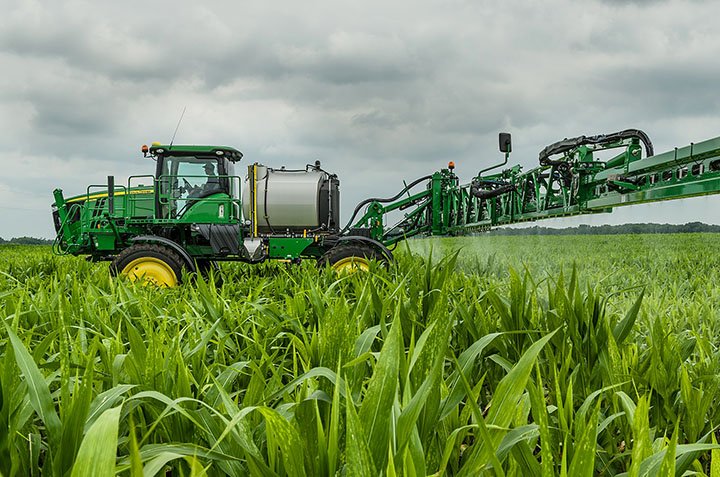Farm Machinery: What is agricultural machinery? Agricultural or Farm equipment is any type of machinery used on a farm to help with farming. Agricultural machinery is machinery used in agricultural farming or other agriculture. The best-known example of agricultural machinery is a tractor. Now let’s get into details of farm machinery types and their importance.
Introduction: Farm machinery plays a crucial role in modern agriculture, enhancing efficiency, productivity, and sustainability. From large-scale farms to small homesteads, these machines are indispensable in various agricultural operations. In this article, we will explore different types of farm machinery, their uses, and highlight the importance of these technological advancements in the agricultural sector.
Tractors: A Versatile Workhorse
Tractors are commonly used farm machinery by both commercial and subsistence farmers. They are wheeled vehicles equipped with large wheels. Tractors themselves do not perform specific farm tasks but rather serve as a power source for other attached equipment. Their main function is to pull machinery and enable them to execute their intended tasks. Tractors can also be used for hauling trailers used in agricultural operations. They come in various sizes depending on the type of equipment to be attached to them.
Sprayers: Effective Crop Protection
Sprayers are farm equipment used for spraying insecticides, pesticides, herbicides, fertilizers, and other products onto crops or plants. They come in different types, including agricultural aircraft-sprayers and blowers-sprayers. These machines are used to apply liquid or powdered insecticides and pesticides accurately and uniformly. Some sprayers can also be used for irrigation purposes, providing water to the farm.
Field Cultivators: Soil Preparation and Weed Control
Field cultivators are designed to cultivate the soil and make it softer for planting. They are used to eliminate weeds and aerate or soften the soil after crop germination. Cultivators play a crucial role in farming today by preparing hardened soils for easy nutrient and water penetration and by removing weeds from the field.
Shredders and Cutters: Controlling Unwanted Vegetation
Shredders and cutters are machines used for shredding and cutting unwanted vegetative growth and weeds. They help maintain the cleanliness and orderliness of the farm by eliminating unwanted plants that can compete with crops for nutrients, sunlight, and space.
Cotton Harvesters: Specialized for Cotton Crops
Cotton harvesters are specific types of machinery used for harvesting cotton crops. They are available in two types: pickers and strippers. These machines aid in the efficient and timely collection of cotton, saving labor and preserving the quality of the harvested crop.
Seeders and Planters: Precise Sowing and Planting
After the land has been cultivated, seeders and planters are used for sowing seeds or planting crops. These machines allow for the precise and uniform placement of seeds, ensuring optimal spacing and improved crop establishment. With the help of seeders and planters, a large quantity of seeds or crops can be planted within a short period.
Wheel Tractor-Scraper: Earthmoving and Weeding
Wheel tractor-scrapers are designed for earthmoving and weeding purposes in crop rows with a width of 1.5 widths or more. They remove weeds within a certain depth by using a pointed blade to cut the weeds into pieces, which are then buried deep in the soil. The buried weeds decompose and contribute to the organic matter available in the soil.
Ploughs: Soil Preparation for Planting
Ploughs are used to plow the soil before sowing seeds or planting crops. Their primary purpose is to make the soil softer, allowing the roots of the crops to penetrate the soil in search of nutrients. Ploughing also helps in weed control and creates a favorable environment for seed germination.
Balers: Efficient Hay and Straw Management
Balers are widely used farm machinery for cutting and baling hay and straw. They can rake and bind bales with twine, making transportation and storage easier. Balers play a crucial role in efficient forage management, ensuring the availability of fodder for livestock during periods of scarcity.
Soil Cultivation Machinery: Enhancing Soil Structure
Cultivators, cultipackers, and harrows are examples of machinery used for soil cultivation. Cultivators stir and pulverize the soil before planting or eliminate weeds. Cultipackers create a firm seedbed by crushing dirt clods, removing air pockets, and pressing down small stones. Harrows are used to break up soil clumps, provide a finer finish, and cover seeds after sowing.
Planting Machinery: Ensuring Optimal Seeding
Seed drills and broadcast seeders are commonly used for planting crops. Seed drills place seeds in continuous flow in furrows at a uniform rate and controlled depth, ensuring even distribution. Broadcast seeders are used to spread seeds, lime, or fertilizer over a larger area. Seed cum fertilizer drills combine seed and fertilizer distribution, making the planting process more efficient.
Fertilizing and Pest Control Machinery: Enhancing Crop Health
Manure spreaders and slurry tanks are used to distribute manure or slurry as fertilizers onto fields. Sprayers play a crucial role in applying herbicides, pesticides, and fertilizers to agricultural crops, promoting healthy plant growth and protecting crops from pests and diseases.
Irrigation Machinery: Ensuring Optimal Water Management
Irrigation equipment such as centrifugal pumps, submersible pumps, sprinklers, and drip irrigation systems are used to provide water to crops in areas with insufficient rainfall or during dry periods. Effective irrigation systems contribute to improved crop yield and water conservation, ensuring sustainable agricultural practices.
Harvesting and Threshing Equipment: Efficient Crop Collection
Harvesting machinery, including combine harvesters, sickles, mowers, reapers, and conveyor belts, are used to harvest crops efficiently. These machines enable timely and mechanized collection of crops, minimizing losses and ensuring optimal yield. Threshers are specifically designed to separate grain from stalks and husks during the harvesting process.
Conclusion
Farm machinery and equipment play a crucial role in modern agriculture, revolutionizing traditional farming practices. They enhance productivity, improve efficiency, and contribute to sustainable agricultural practices. From tractors that provide power for various tasks to specialized machines for soil preparation, planting, fertilizing, irrigation, and harvesting, these technological advancements have significantly transformed the agricultural sector. By utilizing farm machinery effectively, farmers can optimize their operations, increase yields, and contribute to global food security.


